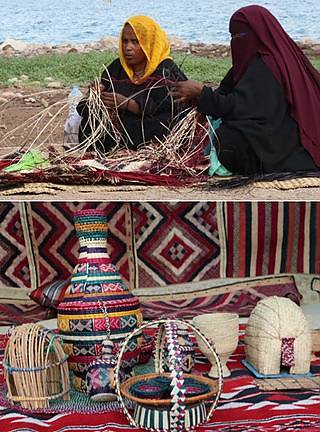This article explains the cultural heritage of Djibouti which includes the culture and some of the historical sites that are found in Djibouti.
CULTURE OF DJIBOUTI
The culture of the Republic of Djibouti is diverse, due to the nation’s Red Sea location at a crossroads of trade and commerce.
Djiboutian population is divided into several human components: the Afars and the Dir (clan) Somali people, the Muslim religion for the most part, that are traditionally attached to anthropological group Hamitic. They were called “Hamites Orientals” to distinguish them from these other Hamites that are Egyptians and Berbers. An important Arab community of Yemeni origin, is also based in Djibouti.
The Afars and the Issa Somalis who are characterized by slender physique, regular features, and proud bearing, they speak different Cushitic languages from the great Afroasiatic language family, and traditionally lived as nomadic pastoralists. However, the population tends to settle because today more than half of its citizens live in the capital and the towns and villages of the interior. This land, traditional crossing point between Egypt, Sudan and Saudi crossroads of nations between Africa and Asia, has likely undergone mixing of populations who have played an important role in the fate of the original peoples of the Djibouti nation. Poetry traditionally recited in the villages by special readers called gabaye was a way of recording the community’s history and customs, as well as current events.
Languages
Djibouti is a multilingual nation. According to Ethnologue, the majority of the population speaks Somali (524,000 speakers) or Afar (306,000 speakers) as a first language, which are the mother tongues of the Somali and Afar ethnic groups, respectively. Both languages belong to the larger Afroasiatic family. There are two official languages in Djibouti: Arabic (Afroasiatic) and French (Indo-European). Arabic is of social, cultural and religious importance. In formal settings, it consists of Modern Standard Arabic. Colloquially, about 59,000 local residents speak the Ta’izzi-Adeni Arabic dialect, also known as Djibouti Arabic. French was inherited from the colonial period and is the primary language of instruction. About 10,200 Djiboutians speak it as a first language. Immigrant languages include Omani Arabic (38,900 speakers), Amharic (1,400 speakers), and Greek (1,000 speakers).
Religion
With few exceptions, Issa Somali and Afar are entirely Muslims, the majority belonging to the Sunni branch of Islam. The constitution of Djibouti likewise defines Islam as the religion of the Republic of Djibouti. Islam entered the region very early on, as a group of persecuted Muslims had, at Prophet Muhummad’s urging, sought refuge across the Red Sea in the Horn of Africa. Islam may thus have been introduced to the area well before the faith even took root in its place of origin. Christianity is a minority religion in Djibouti, with around 4,767 adherents.
Attire
When not dressed in western clothing such as jeans and t-shirts, men typically wear the macawiis, which is a sarong-like garment worn around the waist. Among nomads, many wear a loosely wrapped white cotton robe called a tobe that goes down to about the knee, with the end thrown over the shoulder (much like a Roman toga).
Women typically wear the dirac, which is a long, light, diaphanous voile dress made of cotton or polyester that is worn over a full-length half-slip and a bra. Married women tend to sport head-scarves referred to as shash, and also often cover their upper body with a shawl known as garbasaar. Unmarried or young women, however, do not always cover their heads. Traditional Arabian garb such as the male jellabiya (jellabiyaad in Somali) and the female jilbāb is also commonly worn. For some occasions such as festivals, women may adorn themselves with specialized jewelry and head-dresses similar to those worn by the Berber tribes of the Maghreb.
Music
Djibouti’s various ethnic groups each have their own different styles of music and accompanying dances. Common instruments used by many of the communities are the drum, tanbura and oud. Somali and Afar have a rich musical heritage centered on traditional Somali and Afar folklore. Most Somali songs are pentatonic; that is, they only use five pitches per octave in contrast to a heptatonic (seven note) scale such as the major scale. At first listen, Somali music might be mistaken for the sounds of nearby regions such as Ethiopia, Sudan or Arabia, but it is ultimately recognizable by its own unique tunes and styles. Somali songs are usually the product of collaboration between lyricists (midho), songwriters (lahan) and singers (‘odka or “voice”).
HISTORICAL SITES OF DJIBOUTI
- Asa Koma.
- Handoga.
- Balho Rock Art.
- The Tumulus.
- Abourma Rock Engravings.
- Djibouti City.
- Hamoudi Mosque.
- Archaeological Site of Barogali.

